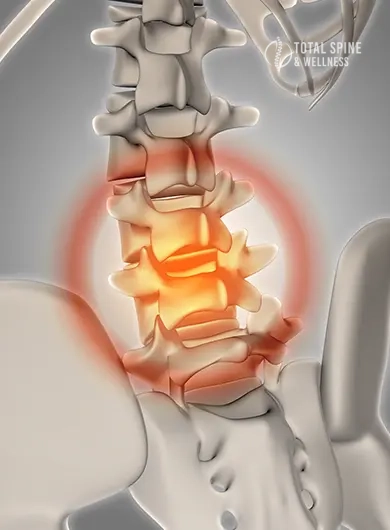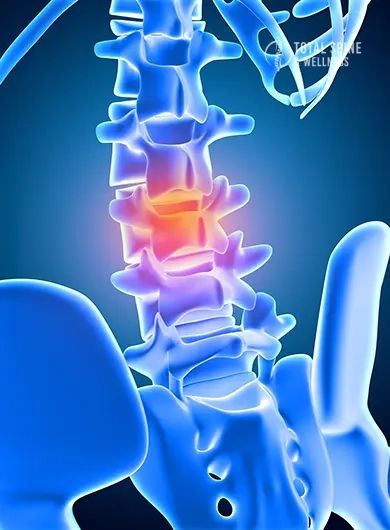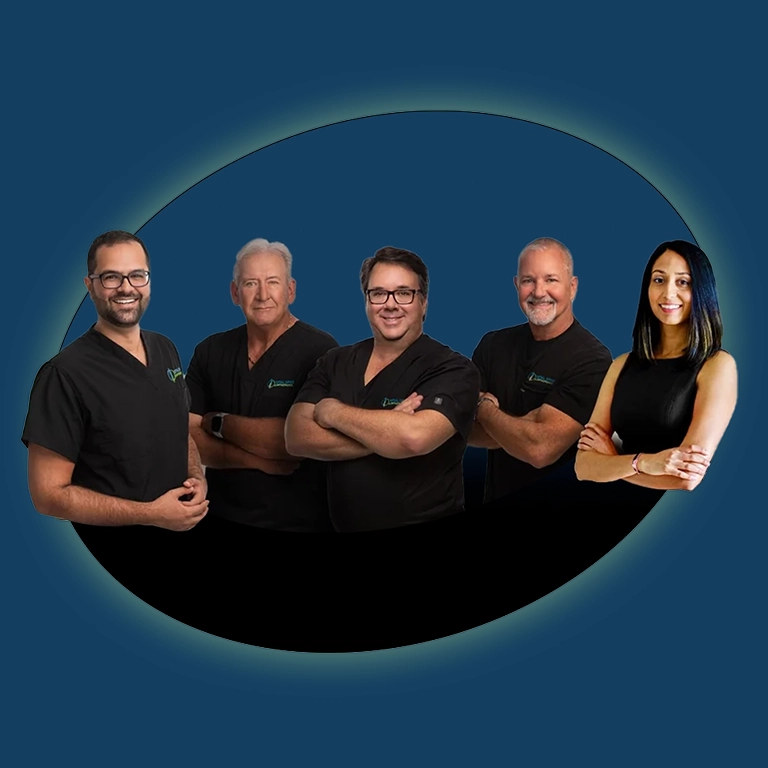Exosome Therapy Explained: A Complete 2025 Guide
Our Team
We are a team of highly specialized spine surgeons dedicated to pioneering the future of spine care.
Share:
Table Of Contents
- Introduction
- What is BMAC Therapy?
- How Does BMAC Therapy Work?
- Key Benefits of BMAC Therapy
- The BMAC Procedure: Step-by-Step
- Ideal Candidates for BMAC Therapy
- Safety and Side Effects
- BMAC Therapy vs. Other Regenerative Treatments
- Advanced Applications and Use Cases
- Understanding the Role of Stem Cells in Inflammatory Modulation
- Additional Regenerative Therapies at Total Spine Wellness
- Emerging Research & Long-Term Impact
- FAQs
- Conclusion & Next Steps
1. What Is Exosome Therapy?
Exosome therapy is a cutting-edge regenerative medicine treatment that uses extracellular vesicles called exosomes to promote healing, reduce inflammation, and stimulate tissue repair. Unlike stem cell therapy, which delivers whole cells, exosome therapy delivers the biological signals that stem cells use to communicate with injured tissues.
1.1 How Exosomes Differ from Stem Cells
Exosomes are nanosized vesicles secreted by stem cells, especially mesenchymal stem cells (MSC). While stem cells regenerate tissue by differentiation, exosomes operate by:
- Delivering messenger RNA (mRNA) and proteins
- Modulating the immune response
- Stimulating tissue repair through cell signaling
They are acellular, meaning there’s no risk of unwanted cell proliferation, making exosome therapy a safer, cell-free alternative to stem cell therapy.
1.2 Therapeutic Sources (MSC, Umbilical, Autologous)
The most common sources of therapeutic exosomes include:
- MSC-derived exosomes (from bone marrow or adipose tissue)
- Umbilical cord-derived exosomes, known for high growth factor concentration
- Autologous exosomes, extracted from the patient’s own blood
Each source offers unique therapeutic benefits, with umbilical and MSC-derived exosomes being the most widely researched for orthopedic and spine applications.
2. How Exosome Therapy Works
2.1 Mechanisms: Cell Signaling, Anti‑Inflammatory, Regeneration
Exosomes function through:
- Cell-to-cell signaling: They direct immune and structural cells to repair tissue
- Anti-inflammatory cytokine modulation: Lowering systemic inflammation
- Stimulation of regeneration: Encouraging cell growth, collagen production, and vascular repair
This makes exosomes highly effective in chronic pain, degenerative disc disease, and joint disorders.
2.2 Procedure Steps: Harvest ▶ Isolation ▶ Injection/IV ▶ Post-Care
- Harvest: Exosomes are sourced from approved MSC or umbilical material
- Isolation: Exosomes are purified and tested in lab-grade conditions
- Administration: Injected directly into joints/discs or delivered via IV
- Post-Care: Physical therapy and lifestyle adjustments enhance results
Patients experience minimal downtime, and the procedure is typically completed in under an hour.
3. Proven Benefits & Clinical Evidence
3.1 Musculoskeletal & Spine Applications
- Disc degeneration
- Joint arthritis
- Ligament tears
Exosome therapy offers pain relief and promotes structural healing for both acute injuries and chronic orthopedic conditions.
3.2 Sports Injury Recovery
Athletes benefit from:
- Faster tissue regeneration
- Reduced recovery time
- Lower inflammation without steroids
This makes exosome injections ideal for tendonitis, ACL injuries, and rotator cuff damage.
3.3 Anti‑Inflammatory & Auto‑Immune Effects
Exosome therapy can help regulate immune responses in:
- Rheumatoid arthritis
- Lupus
- Chronic fatigue syndrome
Its immunomodulatory effects are now being studied in long COVID and fibromyalgia.
3.4 Cosmetic & Dermatologic Uses (brief)
While not the core focus at Total Spine Wellness, exosome treatments are also used for:
- Hair restoration
- Skin rejuvenation
- Acne scar treatment
4. Exosome Therapy vs. Other Biologics
4.1 Stem Cell Therapy
Exosome therapy and stem cell therapy both harness the power of regenerative medicine, but exosomes are acellular, reducing risk and recovery time. They deliver signals rather than whole cells.
4.2 PRP Therapy
Compared to platelet-rich plasma (PRP) therapy, exosomes offer higher concentrations of growth factors and signaling molecules, leading to faster healing and reduced inflammation.
4.3 Disc Regeneration Injections
In conjunction with disc regeneration injections, exosomes enhance disc hydration, repair microtears, and support spinal health without the need for surgery.
5. Candidate Criteria & Who Should Consider It
Exosome therapy is suitable for:
- Patients with chronic joint or spinal pain
- Older adults looking to delay surgery
- Athletes in need of rapid recovery
Contraindications include active infections, certain autoimmune disorders, and cancer.
6. Safety, FDA Status & Ethical Considerations

The FDA currently allows exosome therapy only under certain guidelines:
- Minimal manipulation
- Autologous use or approved donor sources
Clinics must follow strict lab practices. Total Spine Wellness adheres to FDA-compliant sourcing and preparation protocols, ensuring patient safety.
7. Treatment Cost & Insurance Coverage in the U.S.
- Cost factors: Source of exosomes, treatment site, clinical setting
- Insurance: Not typically covered, but financing options are available at most clinics
Patients often require 1–3 sessions depending on their condition and response.
8. What to Expect: Before, During & After

- Before: Consultation, imaging, and health screening
- During: Injection or IV administration under image guidance
- After: Light activity for 24–48 hours, with physical therapy integrated within 1 week
Recovery Timeline:
- Pain relief: 2–4 weeks
- Structural healing: 3–6 months
9. Real‑World Outcomes & Case Studies

Patients at Total Spine Wellness have experienced:
- Significant pain reduction
- Improved joint mobility
- Return to sport and activity
A 62-year-old patient with chronic knee arthritis avoided surgery after two exosome treatments, regaining full function and mobility within 3 months.
Integrating Exosome Therapy with Physical Rehabilitation
One of the most effective ways to maximize the benefits of exosome therapy is to pair it with a structured physical rehabilitation program. While exosomes jumpstart the healing process at a cellular level, physical therapy ensures that muscles, joints, and ligaments regain their strength and functionality.
A combined protocol may look like this:
- Phase 1: Immediate Post-Treatment Care
Light activity, pain monitoring, and inflammation control (Days 1–7) - Phase 2: Guided Physical Therapy
Range-of-motion and light strengthening exercises under professional supervision (Weeks 2–4) - Phase 3: Advanced Rehabilitation
Functional training, stability work, and sport-specific drills (Weeks 4–12)
Patients often report better and longer-lasting results when their exosome therapy is supported by customized rehab plans.
Emerging Research in Exosome-Based Therapies


As of 2025, exosome therapy remains one of the fastest-growing sectors in regenerative medicine. Key areas of ongoing research include:
- Neurodegenerative Disease Management: Exosomes are being explored for their potential in treating Alzheimer’s, Parkinson’s, and stroke-related damage.
- Autoimmune Disorders: Clinical trials are testing exosome applications in diseases like lupus and rheumatoid arthritis for immune modulation.
- Tissue Engineering: Bioengineers are experimenting with scaffold-infused exosomes to rebuild cartilage and bone more effectively.
These developments indicate that exosome therapy is not just a current solution—it’s shaping the future of personalized medicine.


FAQs About Exosome Therapy
1. What exactly is exosome therapy?
Exosome therapy is a regenerative medicine treatment that uses nanosized extracellular vesicles (exosomes) derived from stem cells or other sources to promote healing, reduce inflammation, and support tissue regeneration.
2. How is exosome therapy different from stem cell therapy?
Unlike stem cells, exosomes do not contain DNA or replicate. Instead, they deliver powerful signals (proteins, RNA, cytokines) to surrounding cells to trigger repair and reduce inflammation.
3. Is exosome therapy FDA-approved?
As of 2025, most exosome products are not FDA-approved as standalone biologic drugs. Clinics must comply with FDA guidelines for minimal manipulation and homologous use. Always choose a clinic that prioritizes transparency and regulatory compliance.
4. What conditions can be treated with exosome therapy?
Exosome therapy is used for joint pain, spinal disc degeneration, soft tissue injuries, inflammatory conditions, and even cosmetic concerns like skin rejuvenation and hair loss.
5. How long does it take to see results?
Patients typically notice initial pain relief within 2–4 weeks, with tissue healing and regenerative effects unfolding over 3–6 months.
6. Is the procedure painful?
Exosome therapy is minimally invasive and well-tolerated. Most patients experience only mild discomfort during the injection or IV process.
7. Who is a good candidate for exosome therapy?
Ideal candidates include adults with chronic joint or spine pain, athletes recovering from injury, or individuals seeking a non-surgical alternative to treat inflammation and degeneration.
8. How much does exosome therapy cost in the U.S.?
Costs range from $3,500 to $6,500 depending on the area treated, dosage, and clinic location. It is usually not covered by insurance.
9. Are there any side effects?
Side effects are rare but may include temporary swelling, redness, or mild flu-like symptoms. Always consult a qualified provider to minimize risk.
10. Can exosome therapy be combined with other treatments?
Yes. It is often integrated with physical therapy or other orthobiologic treatments like PRP or stem cells to enhance outcomes.
11. Take the Next Step

If you’re exploring non-surgical, science-backed treatments for chronic joint pain, spine issues, or sports injuries, exosome therapy may be the breakthrough you’re looking for.
At Total Spine Wellness, we specialize in precision regenerative care—tailored to your goals and delivered with the highest clinical standards.
Book your consultation today and discover how our exosome therapy programs can help you:
- Alleviate pain and restore mobility
- Reduce inflammation naturally
- Avoid invasive surgery and long recovery times
📍 Schedule your appointment now with Total Spine Wellness.
Ready to Take the First Step?
You don’t have to live with back pain — and you don’t have to face surgery to fix it. At Total Spine Wellness, we offer safe, effective, and research-backed disc regeneration therapies tailored to your needs.
Call us or click below to schedule your personal consultation and find out if regenerative disc therapy is right for you.

